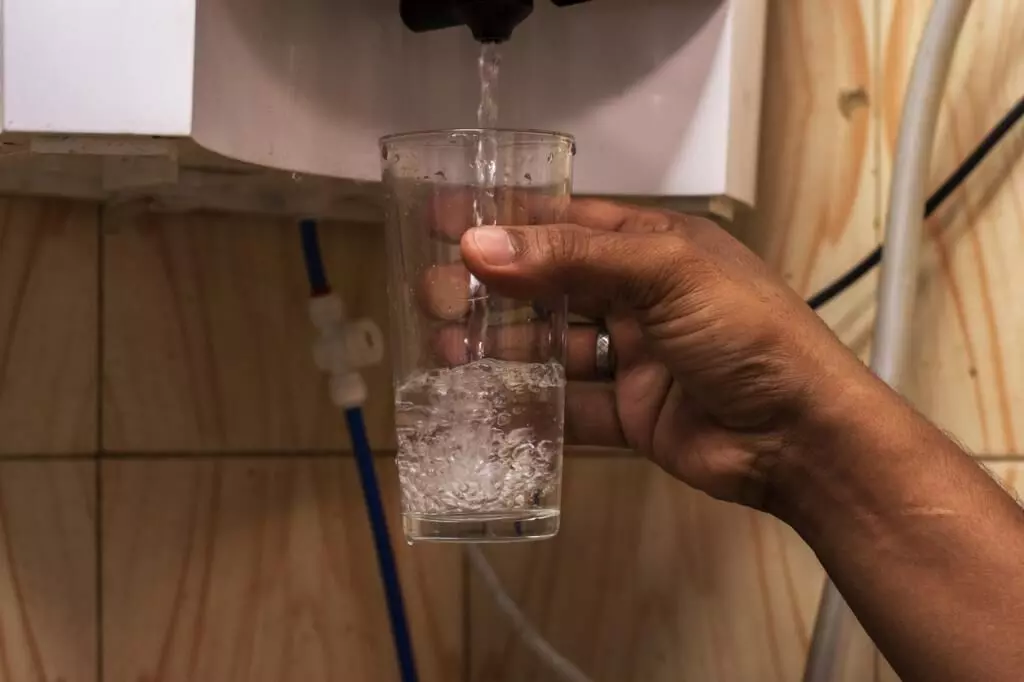Down the drain
Even as institutions and individuals strive hard to save water in Bengaluru, the use of RO purifiers is playing the spoiler by wasting a humongous amount of water

Bengaluru, India’s third most populated city, is grappling with an unprecedented water crisis. The ‘garden city of India’ once had multiple lakes, thanks to the visionary Nadaprabhu Kempe Gowda and the successors of his idea to make a town with artificial tanks and lakes.
In the 1960s, there were over 280 lakes in the city, and only a handful of them exist today. Most were encroached upon as the city expanded rapidly since the Information Technology (IT) boom of the early 1980s.
Today, the city’s groundwater is being exploited limitlessly as the Cauvery and Arkavathi rivers together cannot provide enough water to meet the 2,600 million litres daily (MLD) requirement of the city and the Bangalore Water Supply and Sewerage Board is struggling to bridge the gap.
The onus is now on the residents to devise ways to use the piped water optimally. Over the past few days, households in Bengaluru have gone the extra mile to save water. Installation of rainwater harvesting systems, water rationing with smart metres that cut off the water supply beyond a certain limit, active borewell recharging techniques, water pressure control through faucets and bathroom fittings, among others.
The Resident Welfare Associations (RWA) across the city have resorted to awareness campaigns to limit wastage of water. To save exorbitant amounts charged by water tankers, some residents have relocated to native places and have taken work from home. All of these efforts do count, and all will certainly have the intended outcome of reducing water wastage.
However, one water-guzzling device installed mostly in and around the kitchen area of households and commercial establishments is overlooked: the Reverse Osmosis (RO) water purification system.
RO water purifiers are undoubtedly the most popular and widely used purification system. But for every 1 litre of filtered water, an average RO purifier wastes around 3 litres of water. This indicates that just 25 per cent of the water gets cleansed and the rest 75 per cent is wasted.
RO is a relatively simple process, where pressurised water is passed through a semi-permeable membrane that captures the impurities in the form of dissolved solids. The water wasted has very high Total Dissolved Solids (TDS) and is hard water, which is not recommended for drinking.
The quantity of water wasted depends upon the type of RO system used but even the best efficient systems have a ratio of 2:1 of waste water to purified water.
The Bureau of Indian Standards (BIS) sets the permissible limit for TDS in drinking water as 500 mg / L and the World Health Organization (WHO) recommends a level below 300 ppm.
But the minimum TDS of drinking water should not go below 50 ppm. Drinking water with lower TDS can cause mineral deficiency and high TDS causes a range of health complications such as kidney failure, cardiovascular issues, among others. US-based organisation Transparency Market Research estimates the water purifier market in India will reach a valuation of USD 4.1 billion by the end of 2024 and the RO purifier sector holds the highest market share.
Reverse osmosis is an amazing technology, but it is indeed very wasteful. Countries such as Saudi Arabia, Israel, United Arab Emirates and Australia depend upon using RO to treat seawater and supply their citizens.
Two desalination plants use large-scale RO operate in Minjur and Neemili in Tamil Nadu and provide relief to Chennai’s scarce water resources.
The ideal situation should be potable water supplied through pipes to all households, but just a fraction of the households have those services where urban local bodies (ULB) take up the large-scale purification task. Puri in Odisha is a good example where people can drink water directly from the tap 24/7. The ultraviolet, ultra-filtration, carbon filters and traditional water purification systems provide a good alternative with considerably less water wastage.
If RO wastewater is captured and stored, it can be used for a variety of other purposes. Some of the leading companies are providing attachments along with new RO systems to store the wastewater.
Here are some easy ways to reuse the rejected water.
1. Use it to clean utensils and cooking stains;
2. Use it for washing daily clothes;
3. Use it for household chores such as mopping the floor;
4. Use it for cleaning bathrooms and flushing toilets;
5. Use it for watering plants in gardens;
6. Use it to wash vehicles.
Due to high TDS, it is not recommended to use it for bathing. The rejected water needs to be diluted wherever required. Adopting these simple techniques will ensure that every household saves hundreds of litres of water yearly.
Other than households, there are about 600 RO plants in the city; Bruhat Bengaluru Mahanagara Palike (BBMP) is trying to commercialise them to ensure their maintenance.
On the other hand, the National Green Tribunal and the Central Pollution Control Board have strictly prohibited the use of RO in water purification for TDS less than 500 mg / L. Reasons cited were water wastage, depletion of groundwater and improper disposal of RO filter cartridges.
There is a clear consensus that water is being wasted, yet there’s a lack of direction on how to save it.
Using rejected RO water, along with other water-saving and recharging measures, will ensure residents’ active participation to mitigate the crisis.
Water scarcity is no more a regional problem limited to Bengaluru or Chennai, it is also an issue in Beijing and Cape Town. The idea is to equally combat the crisis as global citizens to avoid having a similar situation knocking at our doorsteps. DTE
Views expressed are personal



